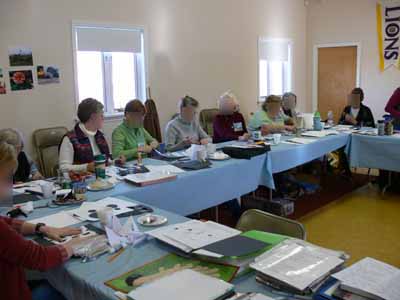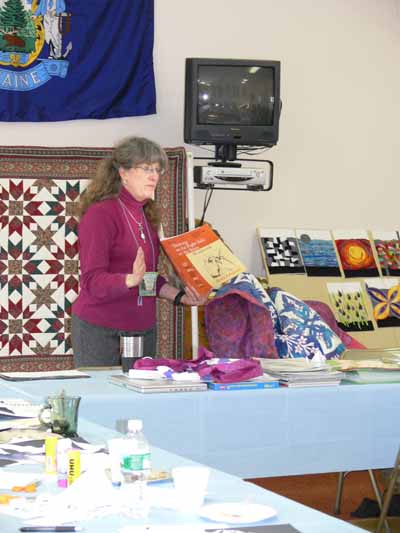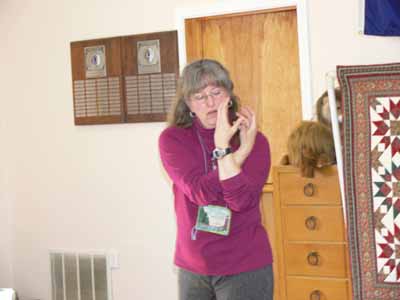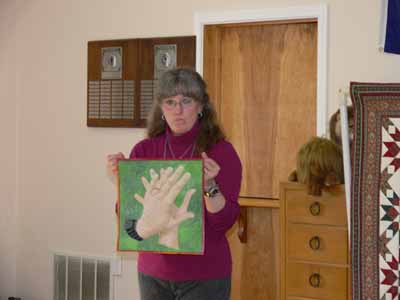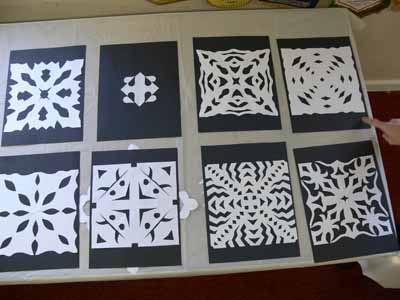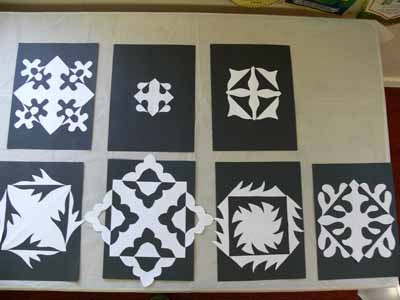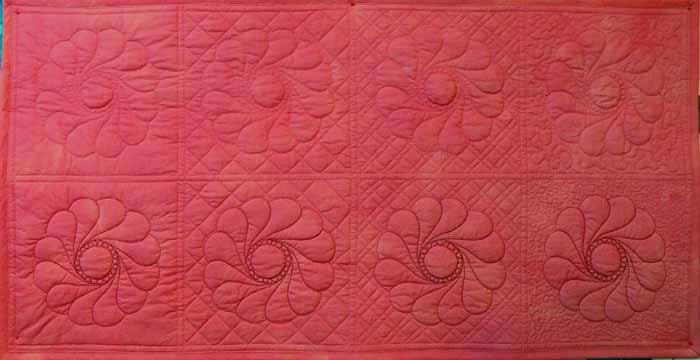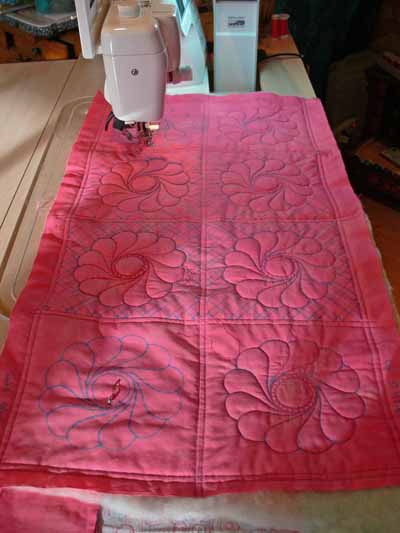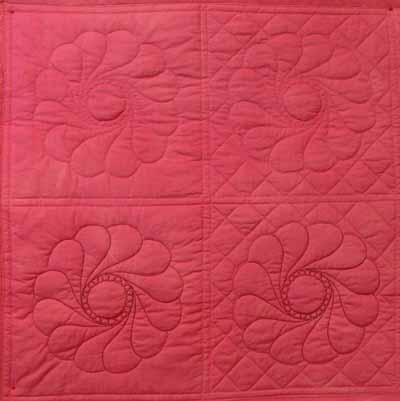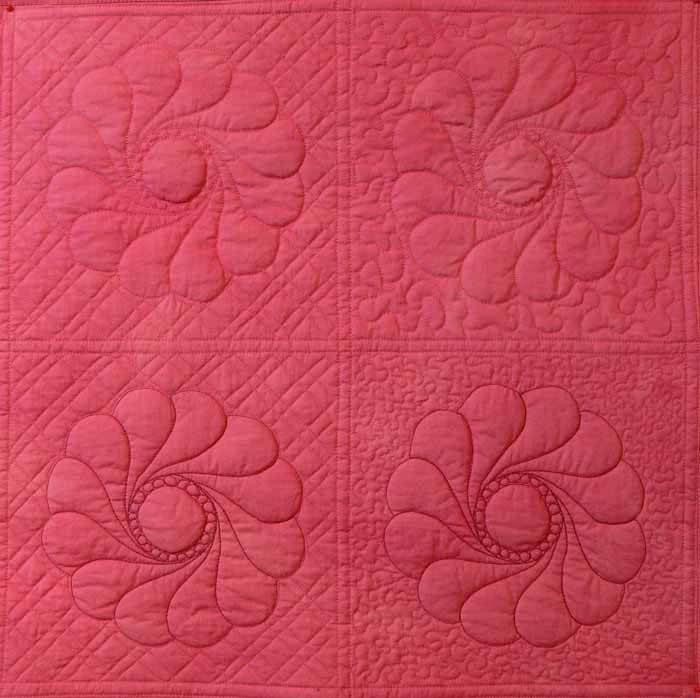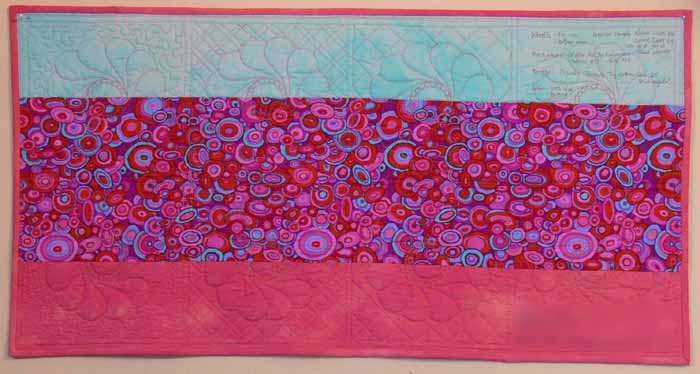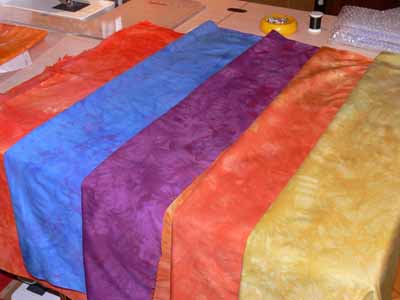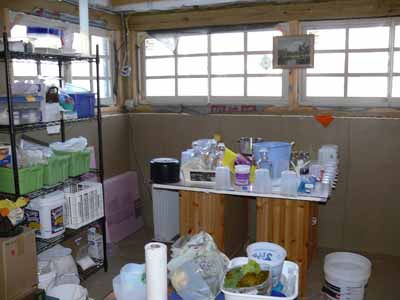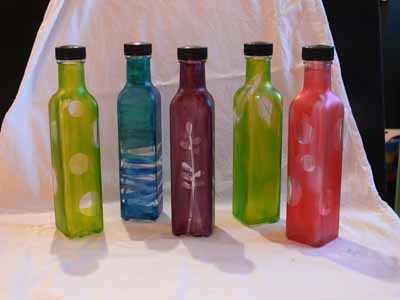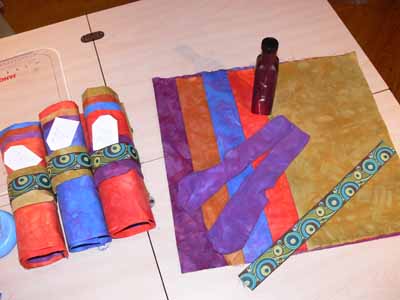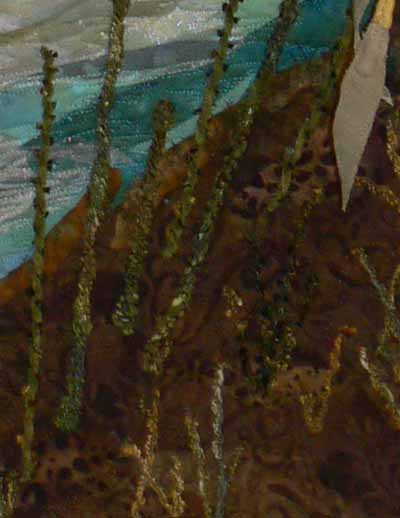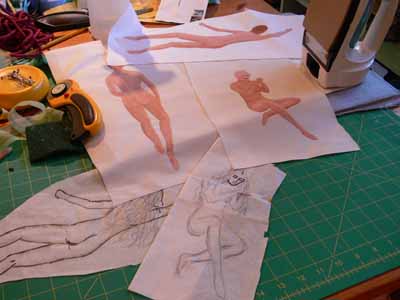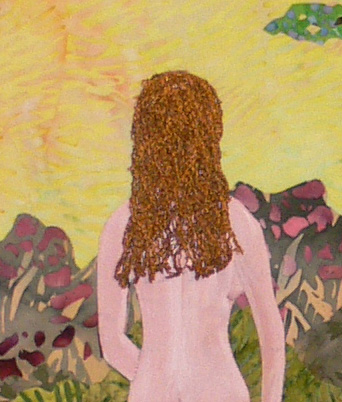ABCs for Coastal Quilters
Sunday, January 13th, 2008In three short months, I’ll be packing to head to my first MAJOR teaching venue: the AQS show in Paducah, Kentucky (it is amazing how quilters instantly know what you mean when you say Paducah, but mention it to the average soul on the street and you have to tell them it’s in Kentucky!). I will be teaching a whole bunch of things, including a class I had –until yesterday– never taught! EEEK! So the Coastal Quilters, my local guild chapter, came to the rescue. I offered to teach the class for free if they would be my guinea pigs…er…. ummm…. test-run for the class (picture above…but I blurred the faces because I forgot to ask each one for the OK to share pics)!
The class members were WONDERFUL, and I came away with several outstanding suggestions for improvements, learned that I needed to show how-to-steps on one project, and also decided I need to add one more exercise (meaning I have to delete something else) that pulls together everything we did in the class (and thanks to mulling it over with Roxanne by e-mail afterwards, have figured out how to do that!). All this is complicated by the fact that I function/teach better in a six hour format, and AQS prefers to offer 3 hour classes!
I started the class with a plug for a book that I consider nothing short of being able to work near miracles: The New Drawing on the Right Hand Side of the Brain and its companion workbook (in the picture), both by Betty Edwards–the two together cost less than US$ 24. I worked my way through the book with two friends, Linda C. and Lunnette H-H., when I lived on San Juan Island (before moving to Maine). We were all “OK” at drawing when we started (Lunnette was better than that, tho), but my gosh did I ever learn. Our before and after self-portraits showed dramatic improvement. I figure if *I* can learn on my own like that, anyone can. As a matter of fact, it was so useful I think I’ll do it again later this year. The titles above are hotlinked to the books at Amazon.com.
The class is called “If you can write your ABCs, You can draw”, and I started with a slide show… I need to improve the technical side of things, but as I showed more and more photos, all of a sudden I could see folks engage and start to “See.” As I told them, learning to draw is really about learning to SEE, then reproducing what you actually see (as opposed to what you think you see!). But, you don’t have to be Rembrandt…. you can use “aids.” some of these are the computer and your camera. To create “With These Hands,” I had my friend Marie take a few snaps of my hands…. I held them something like this:
Then I enlarged the photo on my computer, taped tracing paper to the screen (moving it as necessary) and traced the outlines and major contour lines (light, medium and dark areas). THEN I could transfer those lines to my cloth and create this:
One of the most fun exercises (and alas one which will be eliminated due to time constraints, at least from the 3 hour version of this class), was making paper snowflakes to learn to “draw” with scissors, and to look at the concept of negative space:
Then, a real keeper of an exercise is the “Expanded Square” from the book Notan: The Dark-Light Principle of Design by Marlys Mayfield and Dorr Bothwell (click on the title to see the book listed on Amazon–where it costs mere pennies…way worth it!). This exercise teaches you not only about negative space, but also about balance, rhythm, and possibilities of simple changes. In the book, the authors want you to use spendy black art paper to cut the shapes and glue it to white. Being thrifty (aka cheap) I had folks cut out of common white copy paper and glue it to black construction paper…it works! Here are Betty’s and Prudy’s being-glued examples:
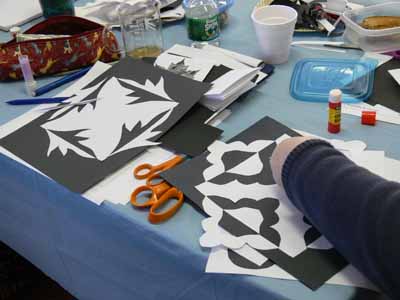
And here are some of the class pieces:
I learned this week that a crafts center in Ripley, West Virginia, wants to hire me (?!!!!! WOOOOHOOO) to teach a 4-day workshop, so I think I’ll combine this class, my quilting design, a bit of machine quilting, and edge-finish classes into a “The top is done…what next?” class! Zippedy do DAH! In a couple days I’ll post my upcoming schedule of classes…. stay tuned! Cheers, Sarah the swamped

